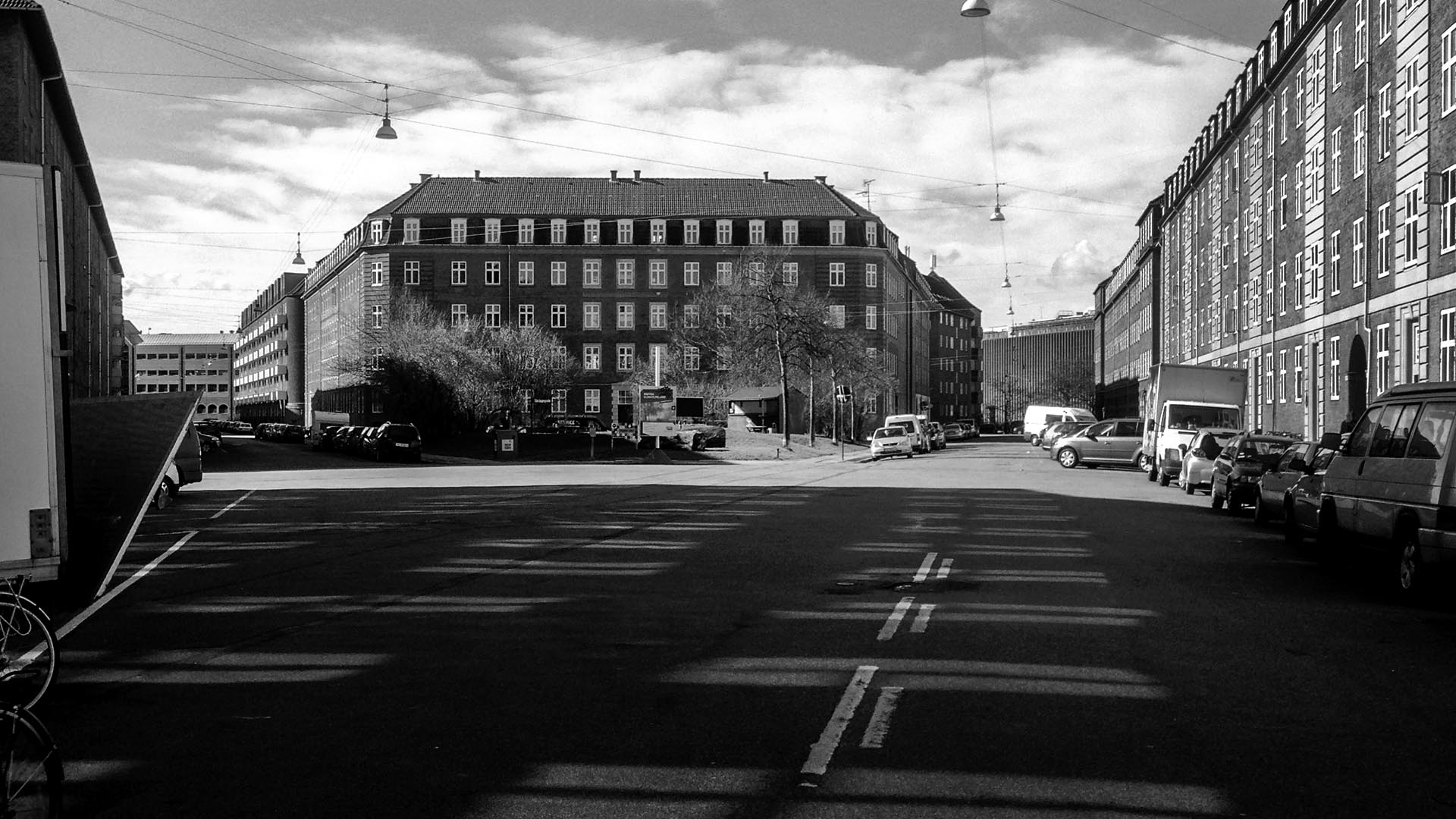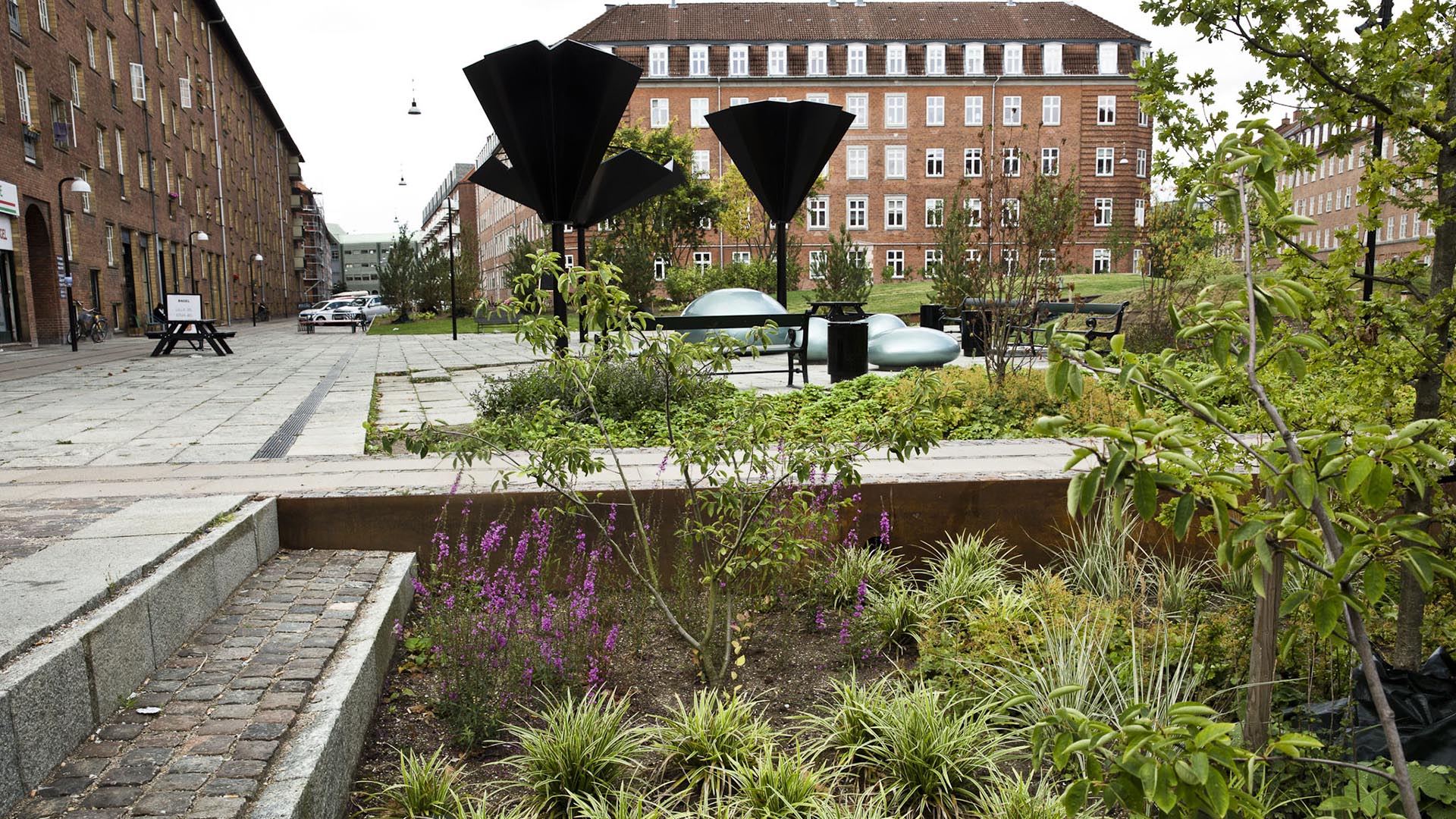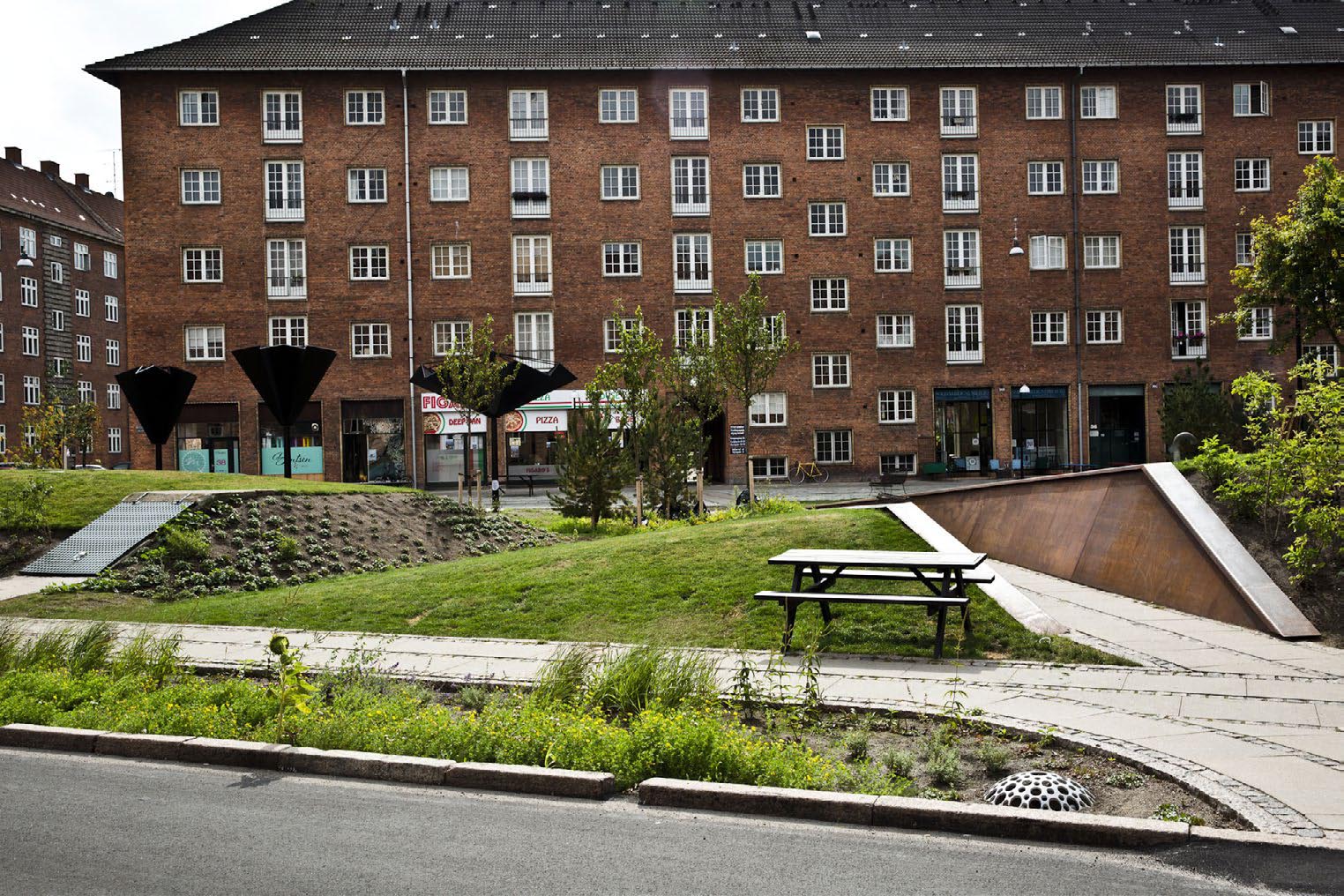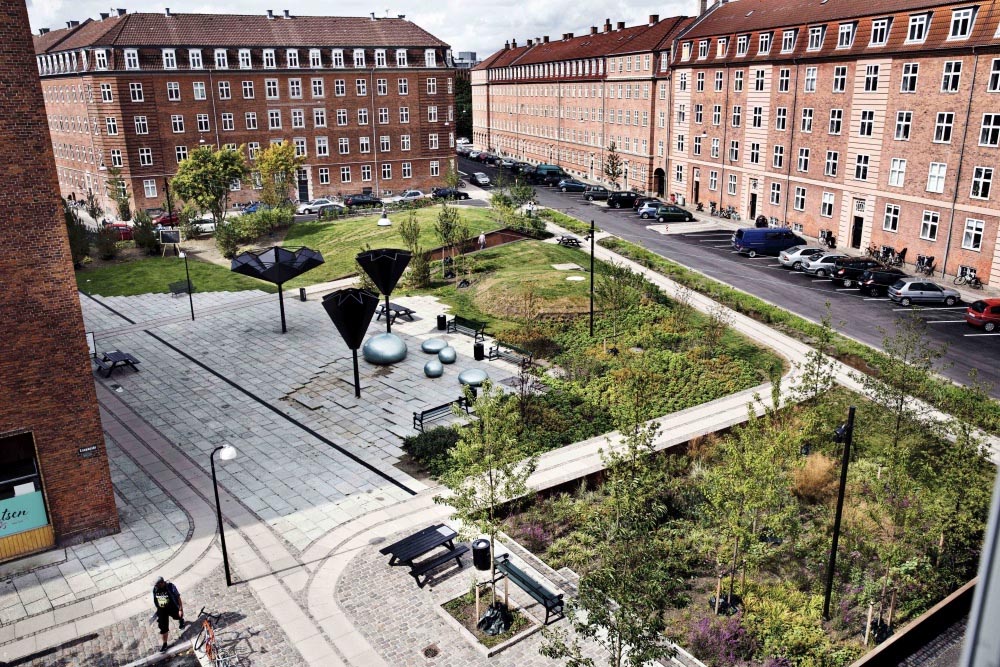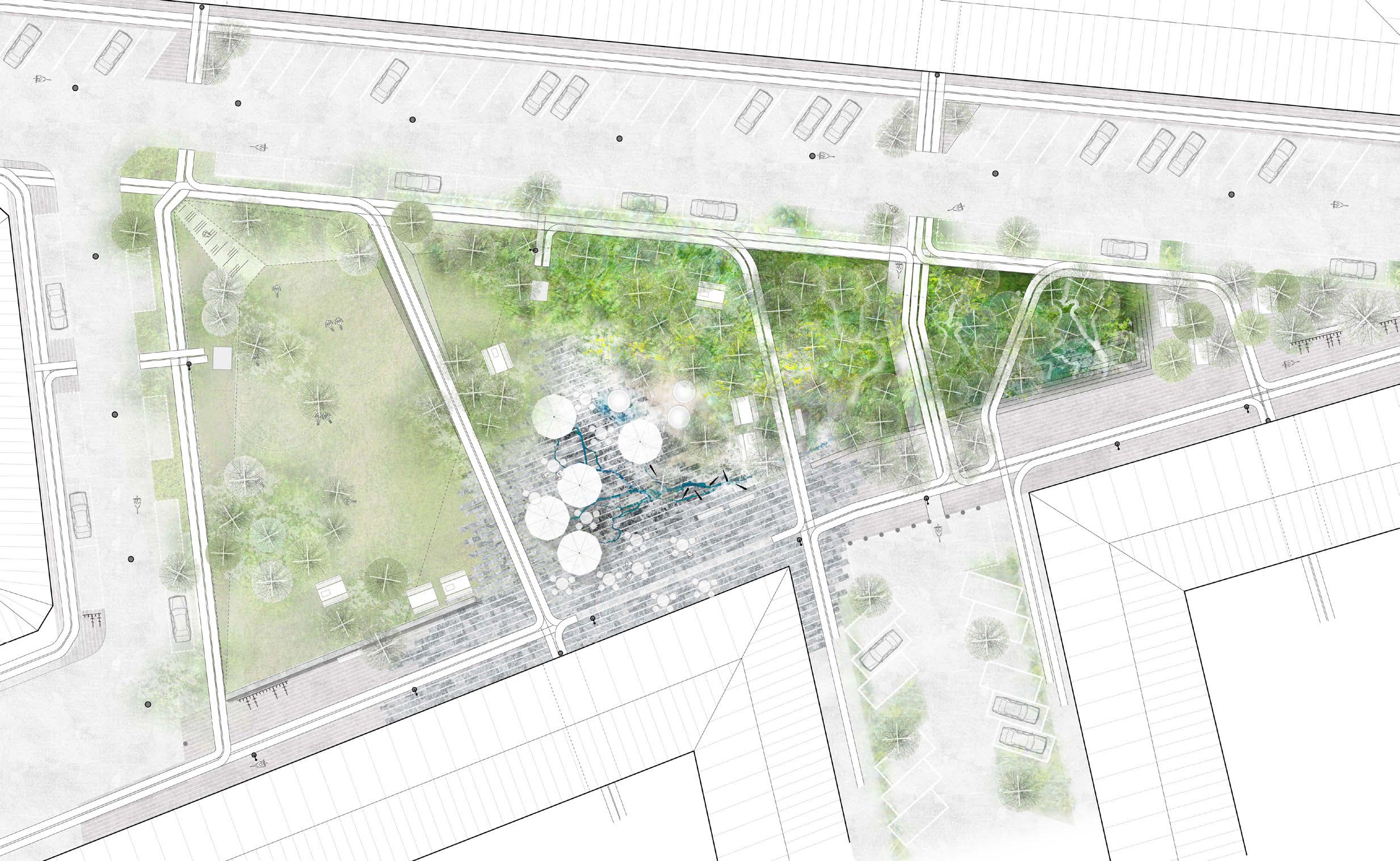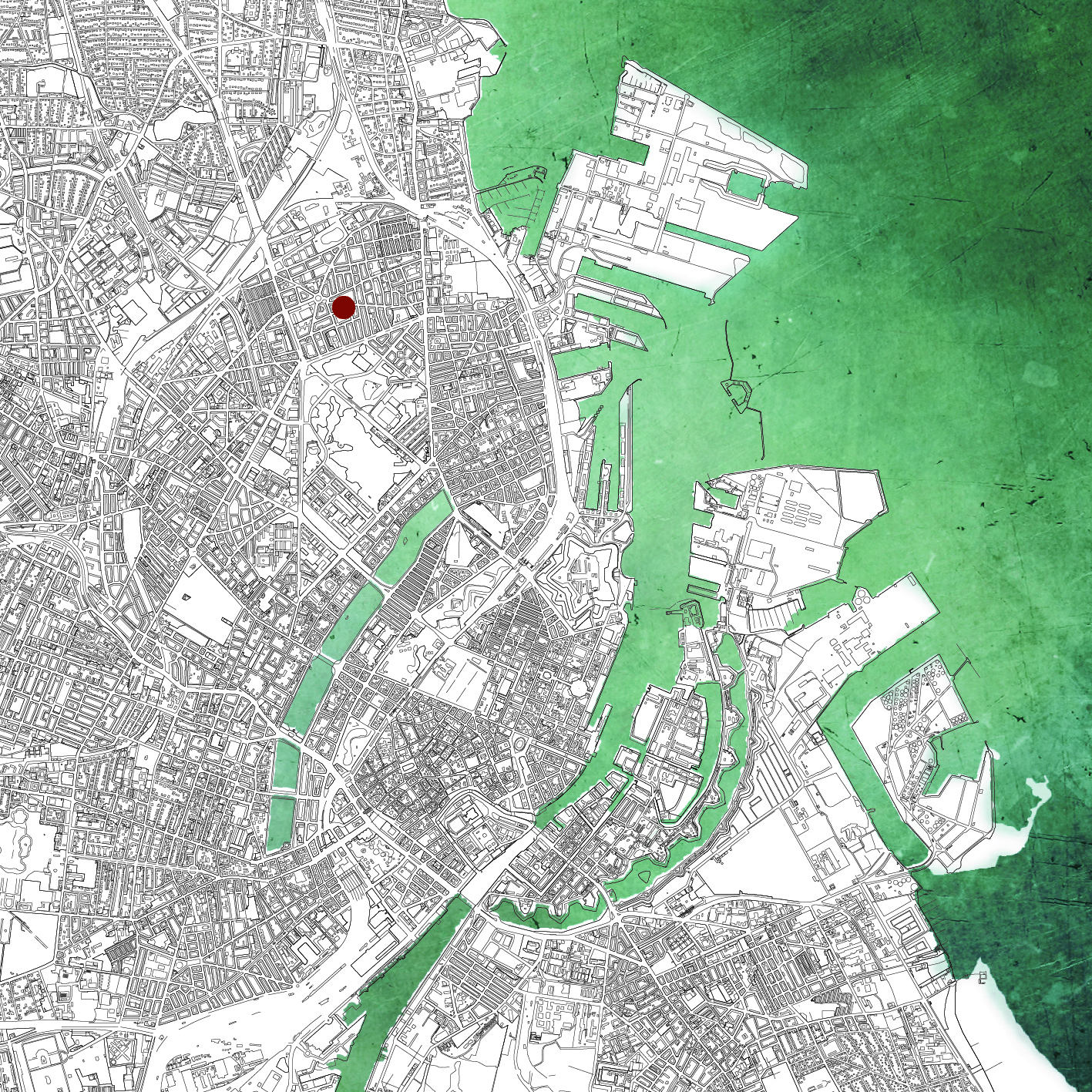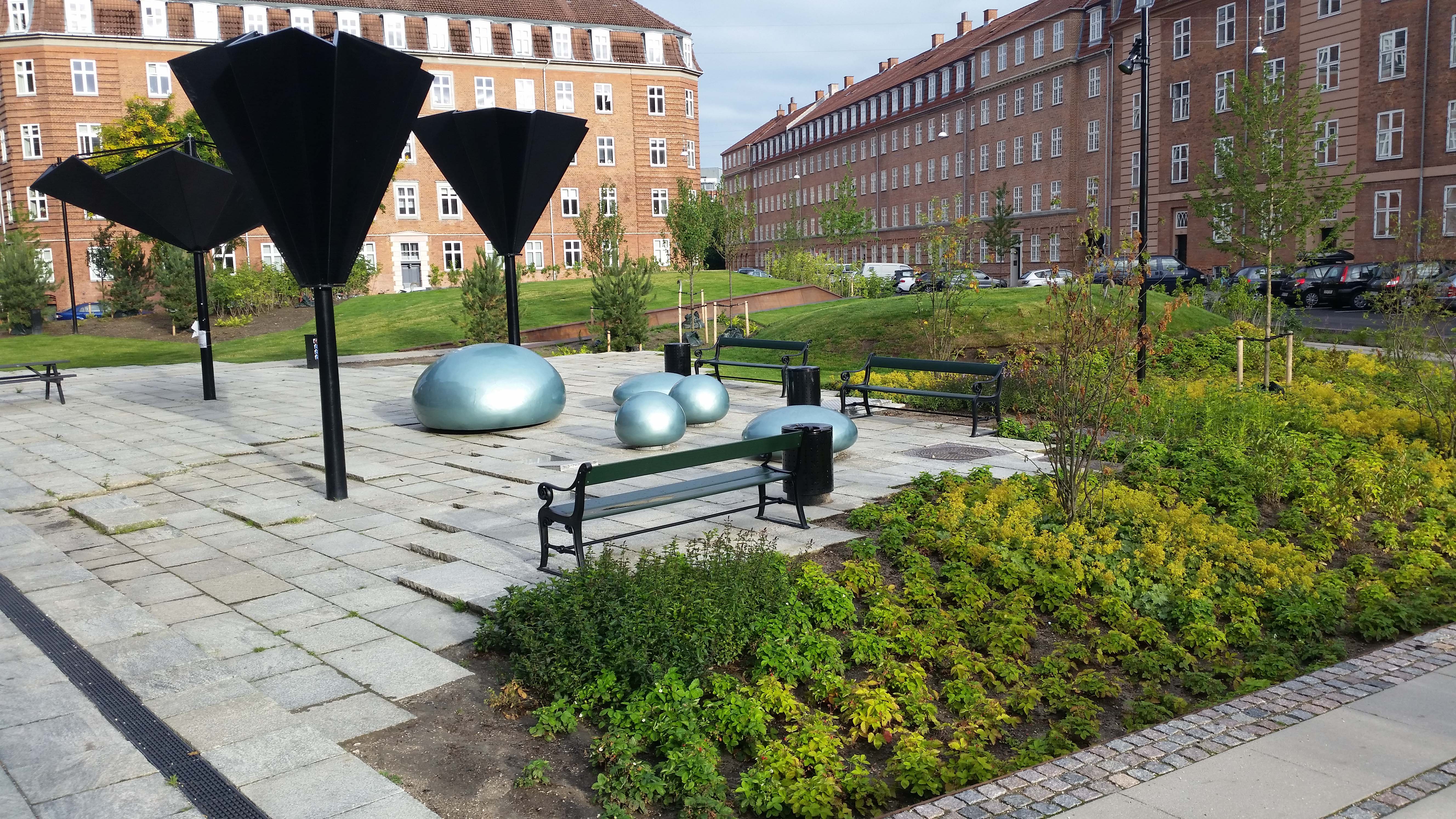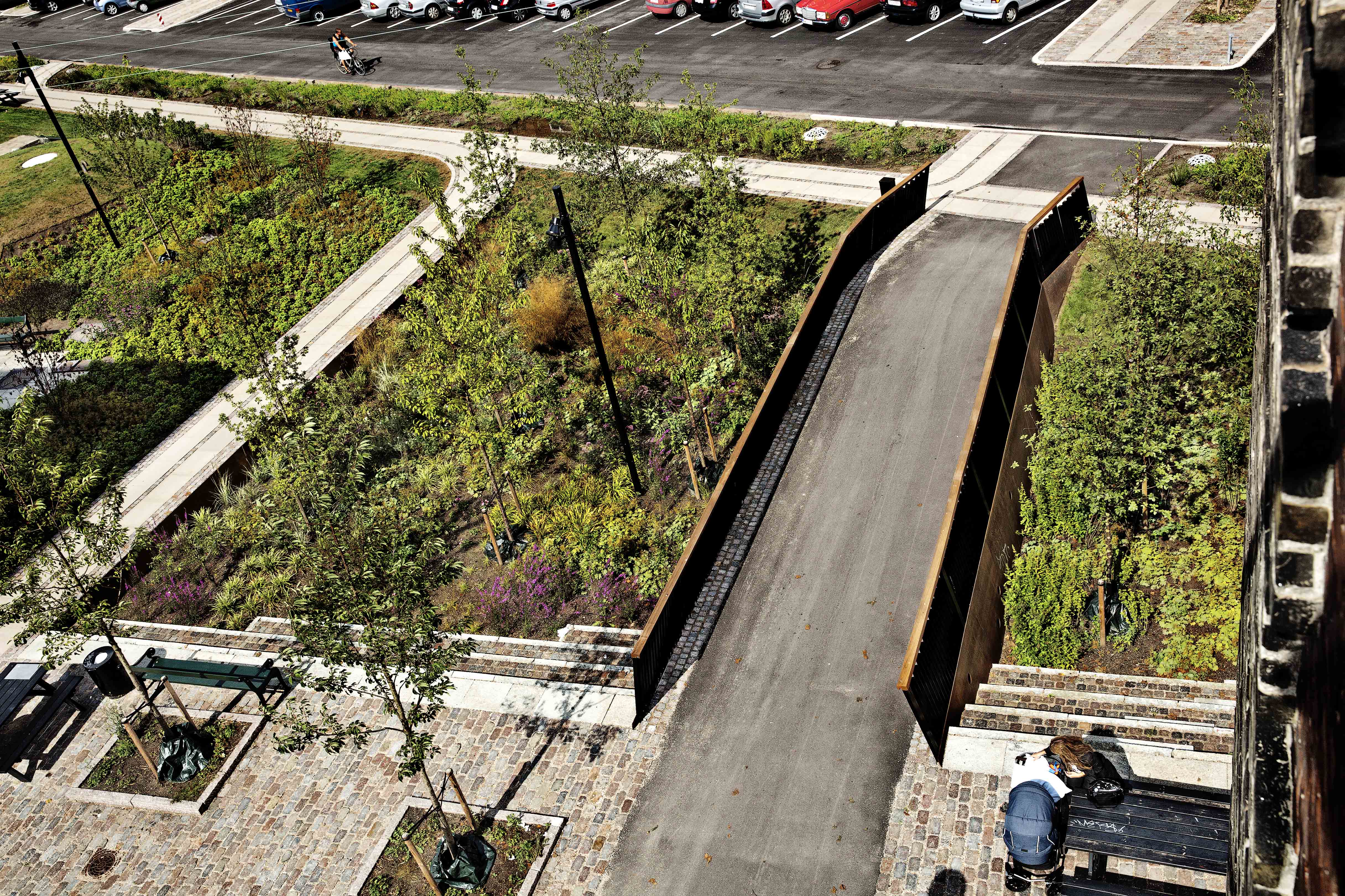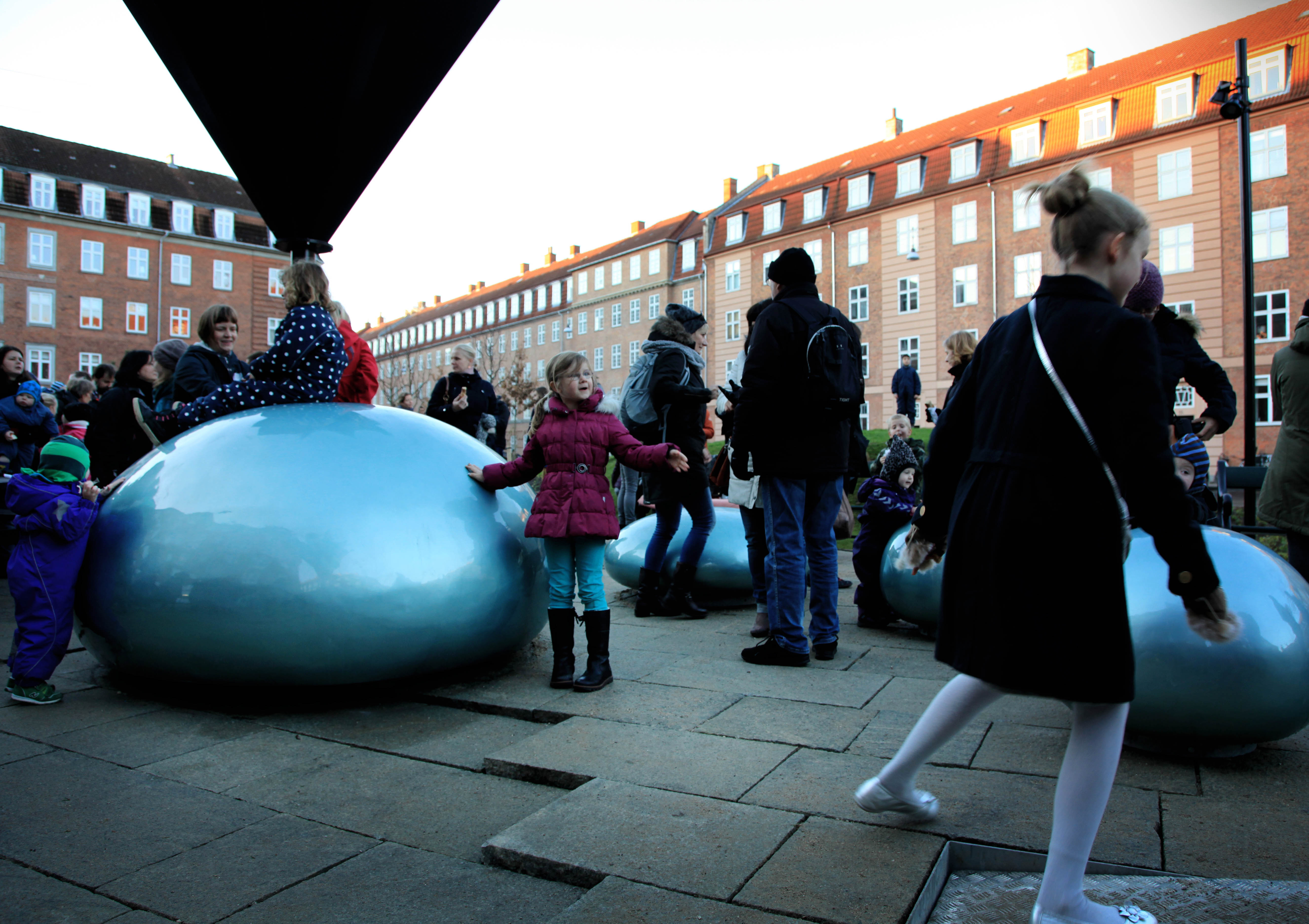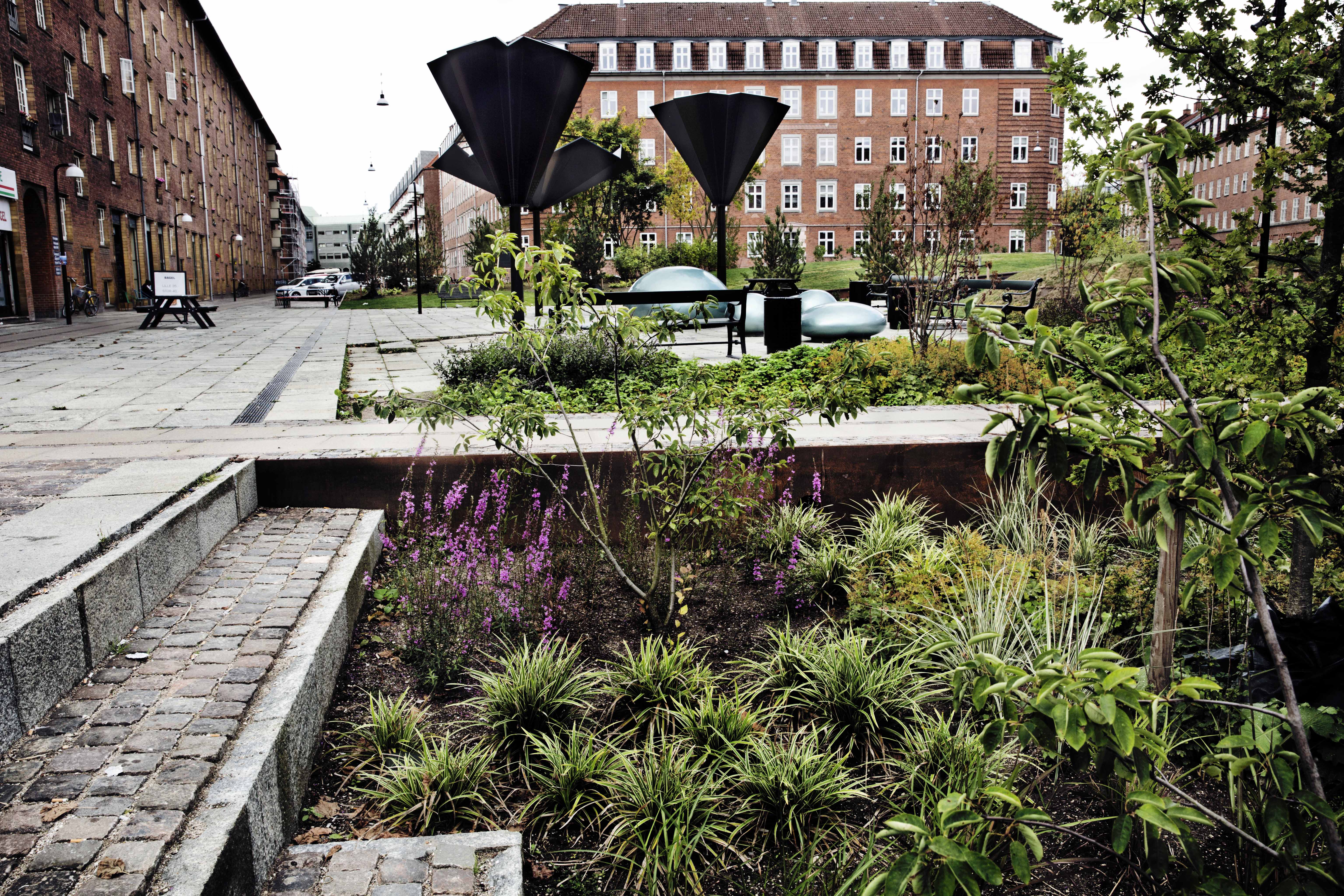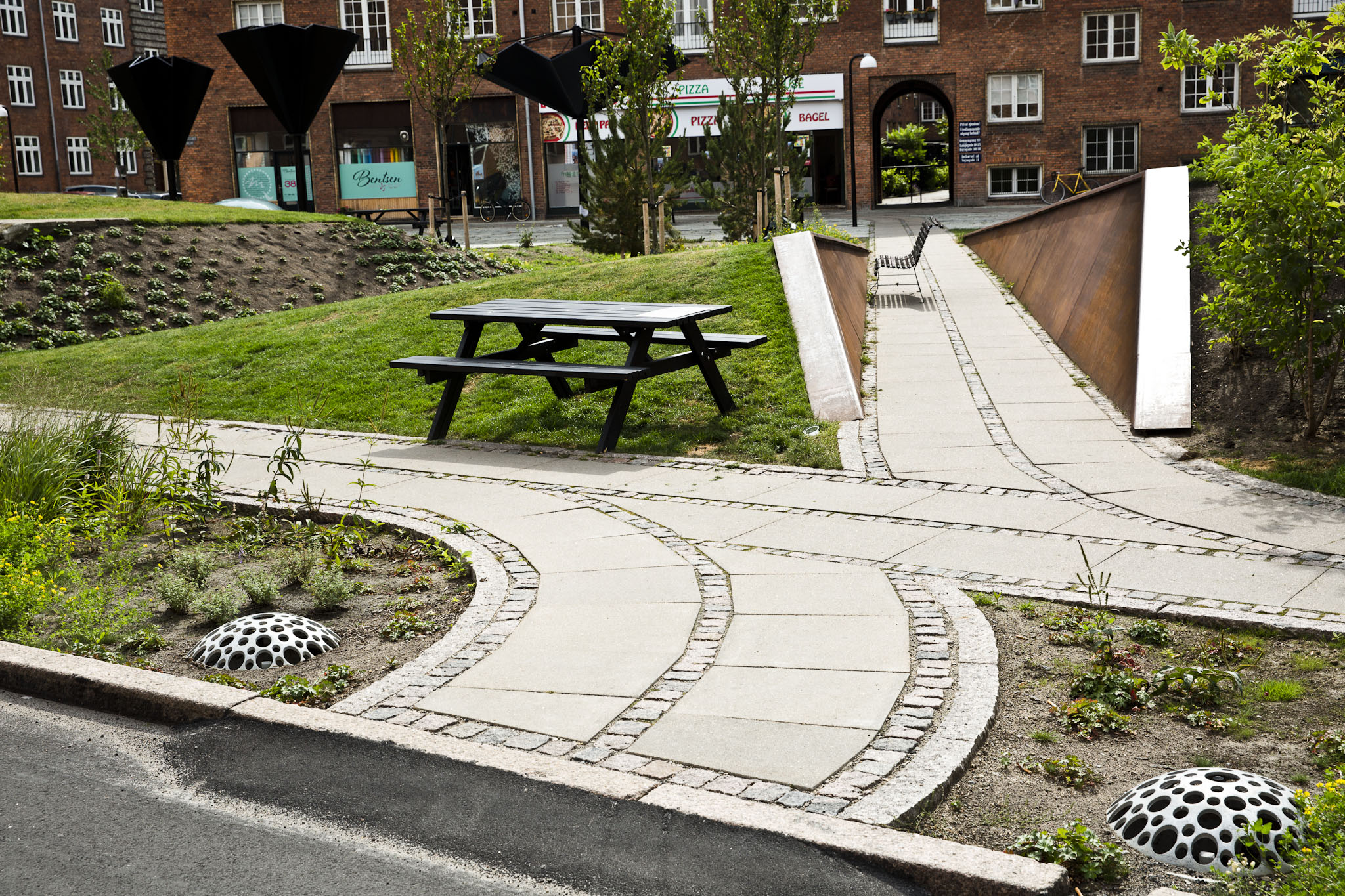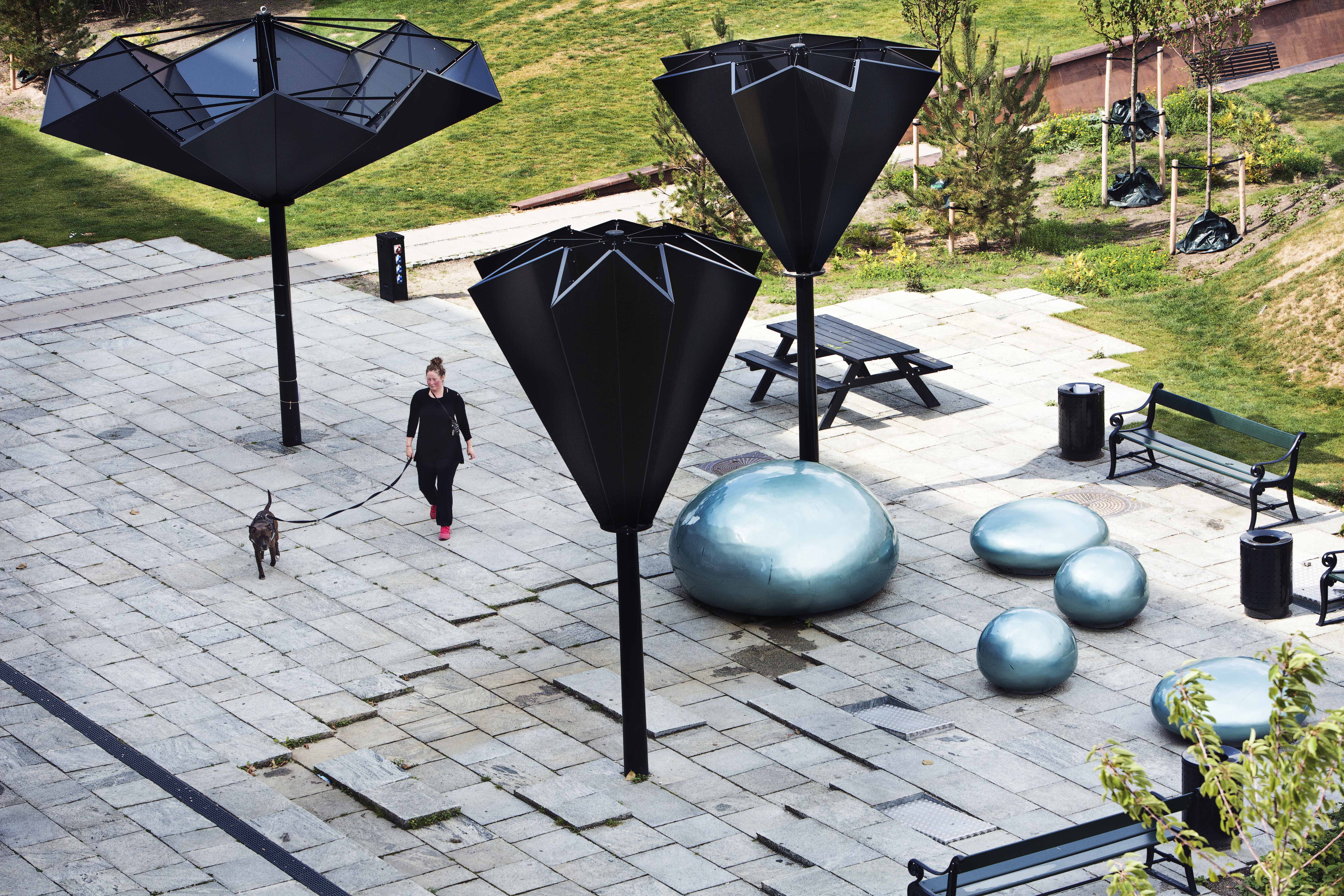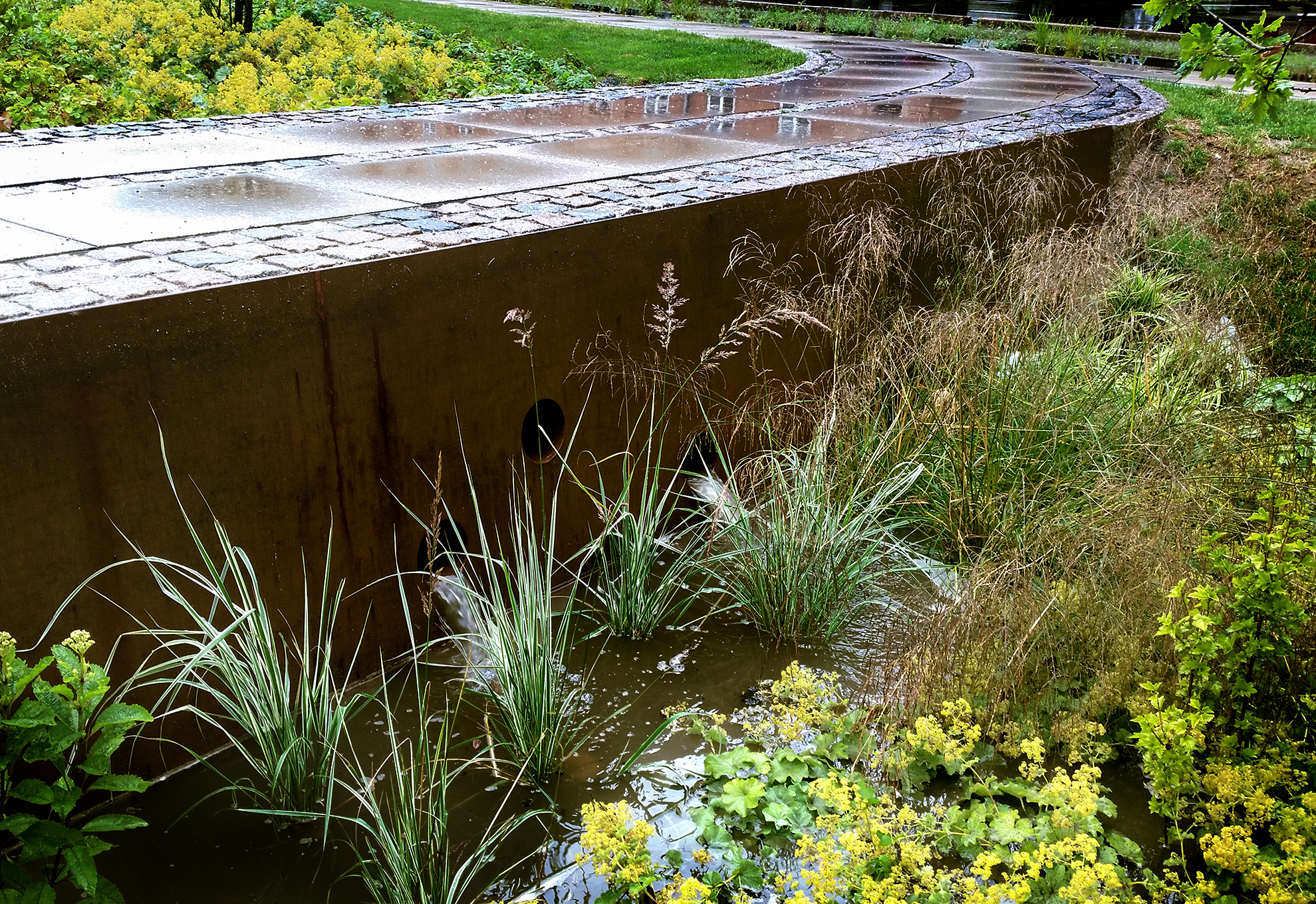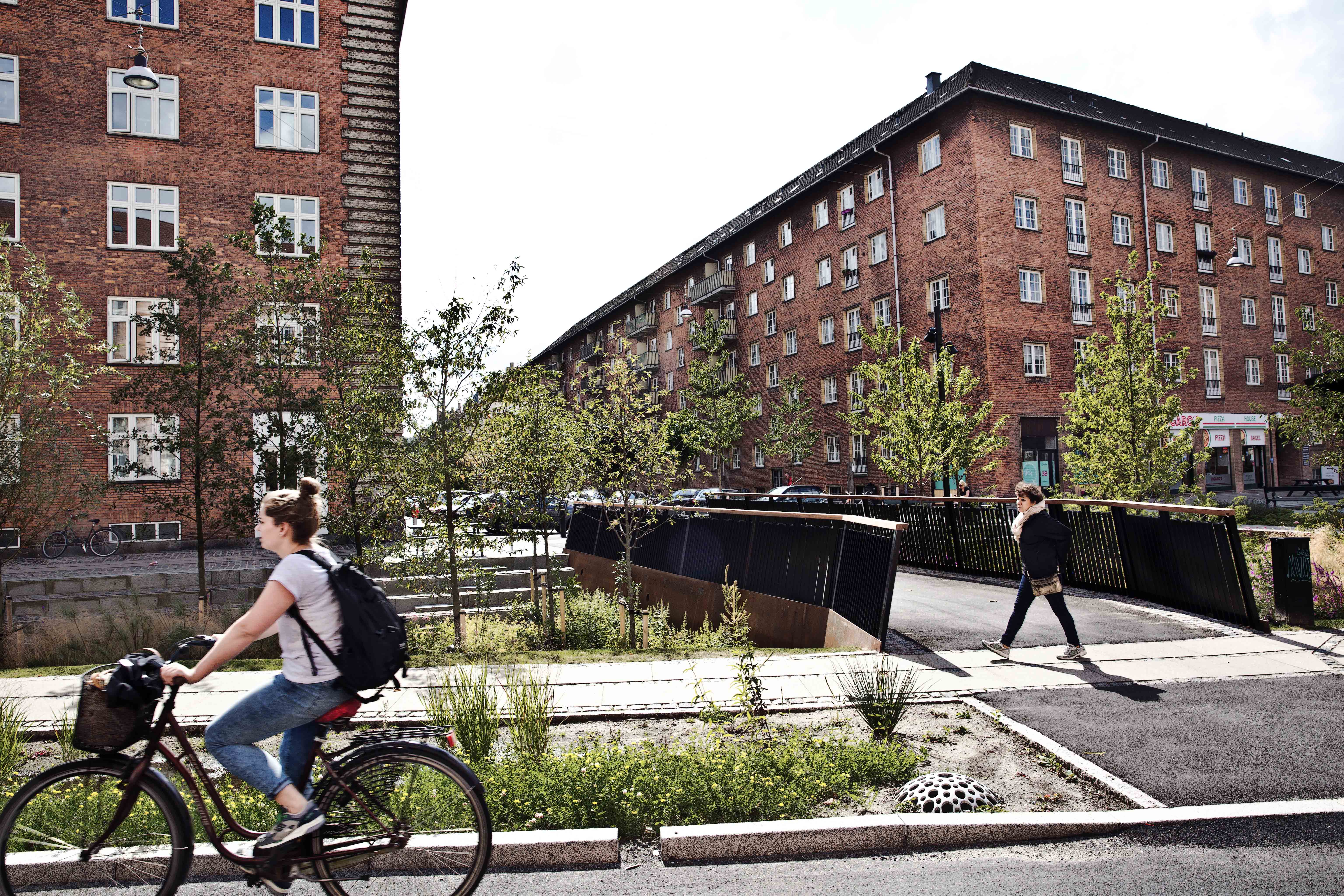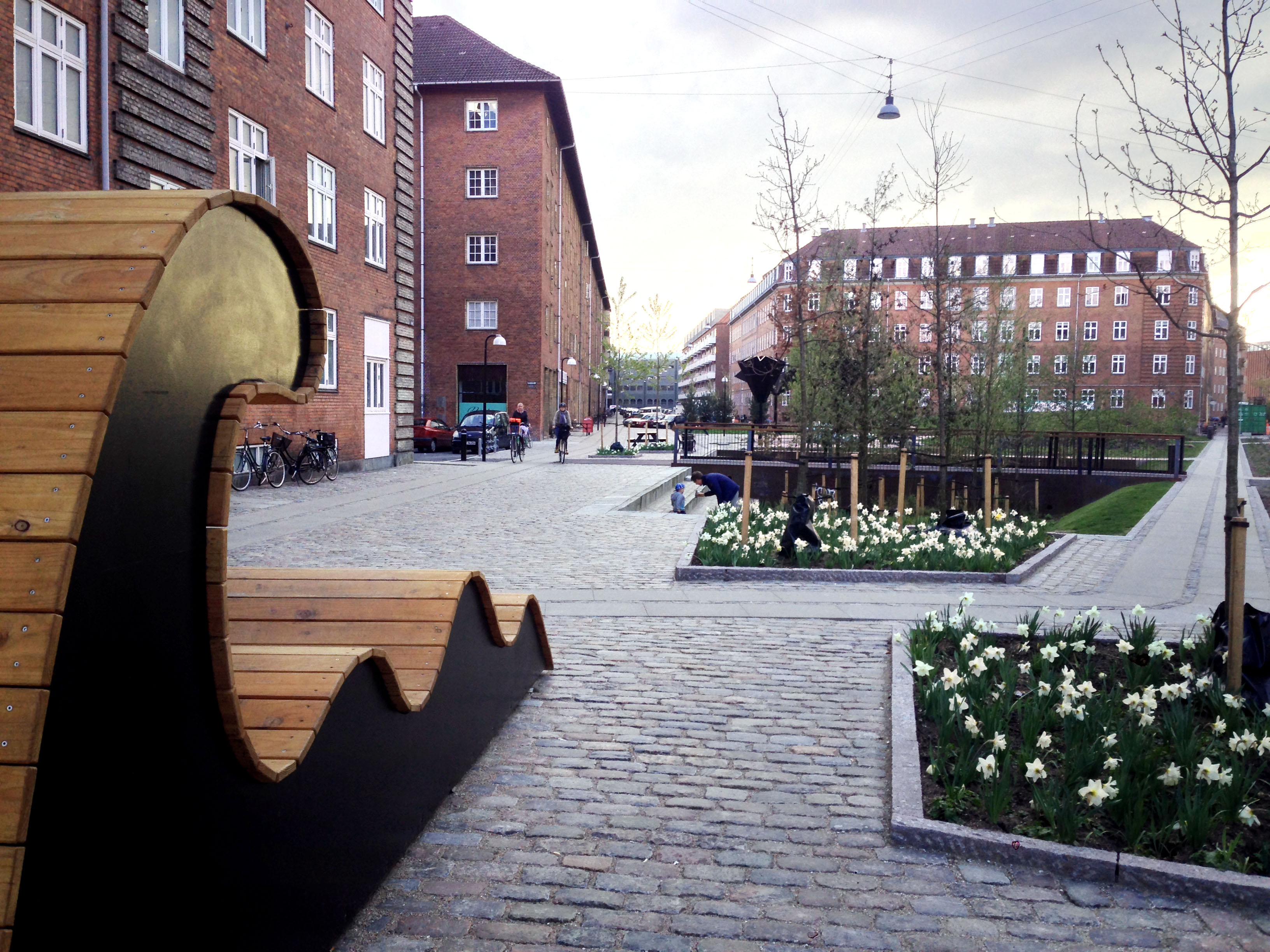Previous state
The effects of climate change are also being felt in Copenhagen. In July 2011, a single downpour caused damage estimated at more than nine million euros. The effects of extreme weather conditions are being felt with increasing frequency in neighbourhoods like Saint Kjeld in the north of the city. Around Tåsinge Square, for example, the basements of bare-brickwork buildings typical of the 1930s are regularly flooded, possibly because the subsoil beneath them is accumulating the water draining off the square. In fact, some years ago, the cobblestones which covered it, as was common in Copenhagen, were replaced with a layer of more impermeable asphalt so that the square could be used as a car park. The only area that was able to absorb the rainwater was a small, uninviting central parterre which was, at most, used as a dogs’ toilet.Aim of the intervention
In recent years, the Copenhagen City Council has given emphasis to its political will of taking a resilient stand against climate change. Among other measures, including a sharp reduction in the use of private vehicles, it has adopted the “blue and green” strategy or, in other words, has included rainwater management in the project of expanding and maintaining the city’s green spaces. This has included replacing impermeable asphalted areas with garden zones which have greater capacity for absorbing and retaining rainwater in heavy downpours.In 2013, as part of this strategy, the Council called for entries in a competition for projects designed to convert Tåsinge Square into a green zone. The renovation, for which two million euros were allocated, was to reduce the public space reserved for private vehicles and to offer the neighbourhood an attractive area which would express the leisure, educational and ecological values of water.
Description
The winning project was inspired by the idea of the rainforest in which the structure of space is determined by the logic of water. From the very beginning, local residents played an active role in defining the project, working in an interdisciplinary team made up of landscapers, engineers and artists. Throughout the development of the project the square itself was the venue for talks, debates and temporary installations giving an account of its evolution.The renovation replaced one thousand square meters of asphalt with a new garden. The relationship between rain and fertility is celebrated by means of sculptures, which include three large metal umbrellas which seem to channel the rain into the subsoil, a wooden bench in the form of a wave, and several stone drops of water which can be used for games or sitting on.
On the less damp western side of the square is a mound named Sun Hill which is planted with trees and tall grasses. On the eastern side are a field of flowers and an array of plant species representing the different biotopes of Danish landscapes. The southern side has an area paved with cobblestones which can be used for neighbourhood activities. This is surrounded by plants providing protective cover from the northern side where some cars still circulate and park.
Assessment
Since before the new Tåsinge Square was inaugurated, the residents living around it formed a committee which oversees maintenance of the gardens and organises local activities. The square is a small never-finished oasis which breathes and grows like the plants inhabiting it. It is true that such a small garden cannot, by itself, achieve much against the immensity of climate change. Nevertheless, the place has considerable educational value and represents an example to be followed because, if it were replicated in small green spaces all over the city, it could contribute towards changing things. Unlike the hegemonic asphalt, planted soil reduces the space once allocated for cars and thus contributes towards lowering the levels of greenhouse gas emissions. Unlike the hegemonic asphalt, the earth can be home to plants that represent health benefits for humans by absorbing carbon dioxide which would otherwise be released into the air. Unlike the hegemonic asphalt, planted ground considerably mitigates the urban heat island effect and also lowers the runoff curve number for urban ground or, in other words, it reduces the direct overflow or infiltration from rainfall excess which, since it cannot be naturally absorbed into the subsoil, has to be channelled away by means of costly drainage networks. All in all, this is no small achievement.David Bravo
Translation by Julie Wark
[Last update: 18/06/2018]


